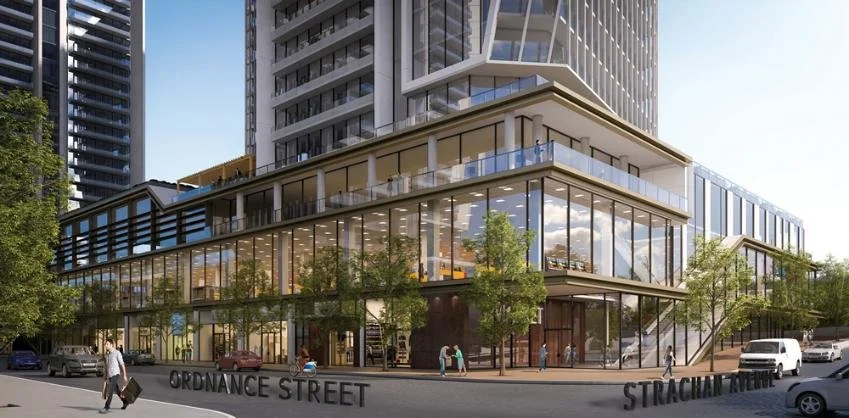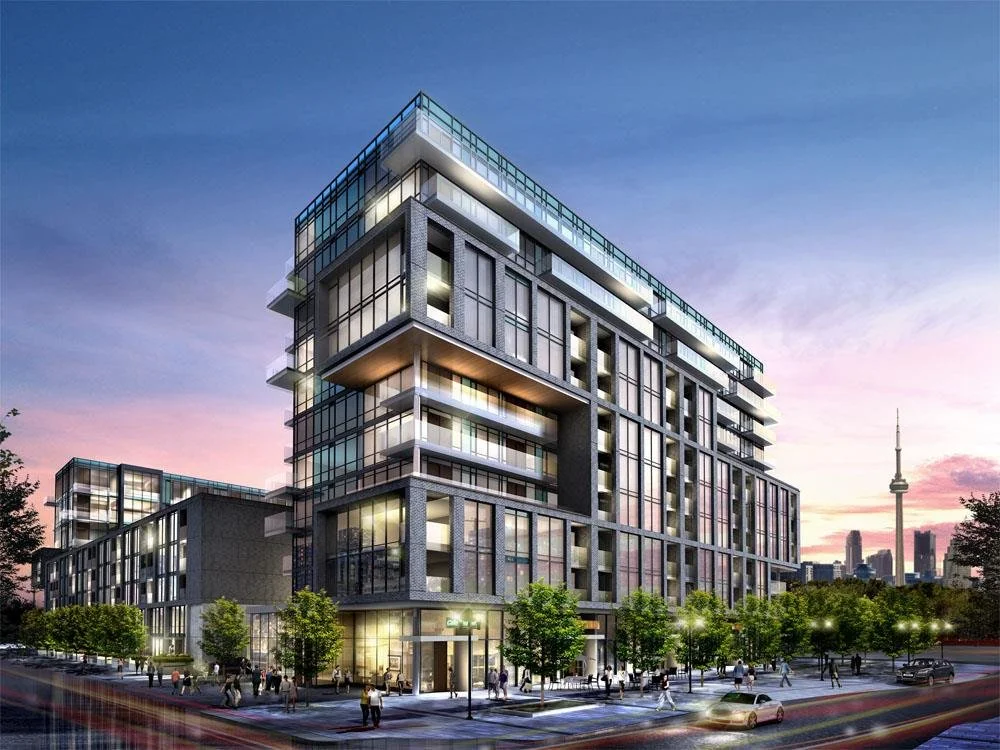5 Things to Know About Interim Occupancy In New Toronto Condos
We wanted to talk today about interim occupancy because it’s a term that still confuses many buyers.
Most buyers understand that when you buy a new Toronto condo either pre-construction, during the course of construction or on assignment, there will be a period of time when the building first opens, prior to the building being registered and owners taking title, where they will be required to assume their unit by paying what’s commonly known as “phantom rent” to the builder.
This period of time between the building being green-lighted for occupancy and it being registered is known as the interim occupancy period when owners move in (and investors start renting out to tenants) but don’t technically own their units yet.
This isn’t the bit that causes confusion. What’s confusing to a lot of people are the exact rules and timelines surrounding interim occupancy.
We don’t want to over-simplify what can actually be a very complicated process but, for the sake of getting a handle on the basics, you need to understand these five things in regards to interim occupancy if you’re thinking of buying a new Toronto condo that’s not yet registered.
Buying New Toronto Condos: Top Five Things To Understand About Interim Occupancy
#1 It Could Take A Long Time To Take Ownership
Ownership doesn’t happen until title is transferred. Title can’t be transferred until the building is registered and that can take months, sometimes 18 months or longer.
While most buildings are registered within 3-6 months, it’s not unusual for serious delays to occur. The builder is not always at fault for these delays; the matter of timing is often out of their hands. The builder wants this handover process to be as quick as possible – most developers aren’t interested in being landlords and want to cash out – but holdups can happen.
So bear this in mind when buying pre-con and make sure that you really understand just how long interim occupancy can last, budgeting for best, likely and worst case scenarios in your financial calculations.
#2 You Have to Pay Rent to the Builder
During interim occupancy, rather than paying a mortgage (your mortgage doesn’t take effect until you take title and officially become the owner), you’ll be paying what’s known a “phantom rent” to the builder.
This fee, typically paid monthly, consists of property tax (sometimes), common expenses (which will become your maintenance fees) and the interest on the unpaid balance of your purchase price which the builder isn’t getting until you take ownership and your bank pays them the balance.
If your “rent” excludes property tax, keep in mind you’ll be hit with a big payment months or even years down the road once the building is assessed and so you should be saving for this in the meantime.
The biggest chunk of phantom rent is by far the interest on the unpaid “loan” from the builder. Interest rates vary – make sure you read your contract carefully and review it with a lawyer before the 10-day cooling off period – but anywhere from 3%-6% is typical.
To put this into numbers: if you purchased a $500k condo with 20% down, you still owe the builder $400k. At 5% interest, you’ll be paying roughly $1,667/month in rent plus fees until registration.
If registration takes a year, which is not unheard of by any stretch, that’s $20K extra in payments that you may not have anticipated if you weren’t clear on the risks and rules of interim occupancy.
#3 That Rent Doesn’t Go Towards Paying Down Your Mortgage
Some buyers think that the interest they’re paying during interim occupancy is mortgage interest. Phantom rent has nothing to do with your bank. It’s interest on the unpaid loan from the builder. Therefore, this is extra money you have to factor into the purchase price when you’re doing your calculations and weighing the potential ROI of different options.
Some buyers try to mitigate the risk of paying too much phantom rent by increasing their down-payments as much as possible. However, that’s also a risky option because if anything goes south with the project or the builder (for example, bankruptcy), Tarion will only insure up to $20K. If the builder can’t or won’t pay up on any outstanding sums owed, buyers would then be forced to walk away or take up legal action.
In terms of seeing phantom rent as “lost money” or an additional expense – if you’re already renting and paying something comparable then this isn’t as big of a deal because you need a place to live anyway.
If, however, you’re living rent-free with family or you have a stellar deal on your current rent and this represents a big jump in monthly expenditures, then it can seem like money wasted that many first-time buyers are not prepared for, particularly in those worst-case scenarios where a builder faces extra-long delays in building registration.
#4 You May Be Living in a Construction Zone
Just because your unit and the common areas that occupants will pass through (like the lobby and halls) have been green-lighted for occupancy, not all condo units will be ready. Builders can’t afford to let money slip away by leaving occupant-ready units vacant while they finish the rest of the units and so they flight occupancy as and when units / floors are complete.
Typically, units on the lower floors hit occupancy first. If you happen to be near the front of the line in the build schedule, this can be both a good and a bad thing. If, for example, the build has been delayed long past the original completion date you were promised, then getting in ASAP may be a positive thing in your eyes.
On the other hand, if the units above you are all still under construction, you have to live with a lot of noise, elevators being locked for builder-use, dust and dirt coming through your windows and HVAC system and all the other annoyances of living in what’s still an active construction zone.
Not only that, your own unit may not be 100% complete which means dealing with in-unit work, allowing workers access to your home. Getting green-lighted for occupancy requires that the unit be constructed to a substantial level but this doesn’t mean it’s 100% complete. There may be minor, non-essential finishes still to install or tweaks to be made.
A builder is going to want that “okay” for occupancy ASAP as time is money and so don’t assume that they’re going to complete every single task on their list before handing you the keys. More than likely, they’ll just do whatever they have to to qualify as “substantially complete”.
#5 There May Be Conditions Beyond Financial Agreements Attached to Interim Occupancy
While the builder is subject to the laws of the Ontario Condo Act when it comes to regulations around interim occupancy – one of the big ones being that they can’t make a profit off of you during this period and can only charge back expenses at cost – specific obligations beyond financial agreements may be included and will differ from builder to builder.
Yet another reason why educating yourself before you set foot in a new condo sales office and working with a condo expert is so critical.
Lead Image: Fuse condos currently under construction in Davenport Village, rendering © Neudorfer Corp. Garrison Point condos adding further density to under-utilized land near Liberty Village, street-level rendering © Diamond Corp. Canary District condos aiming for occupancy Spring ’16, rendering of both exterior architecture and interior of suite © Dundee Kilmer. Residences at the Huntclub in Birch Cliff are one of the most highly-anticipated new Toronto condos to come along in years, rendering of rooftop terraces © Infinity Development Group.



